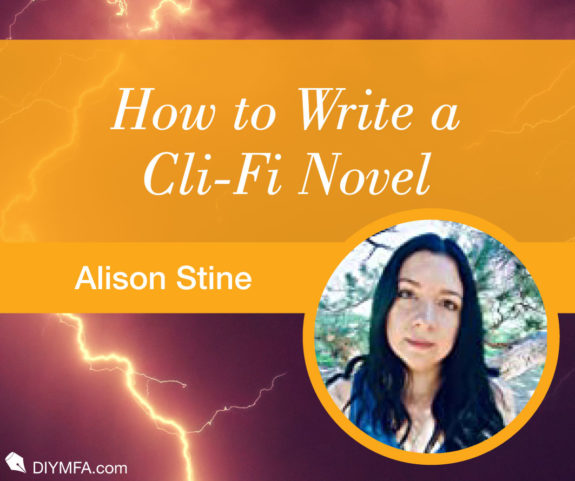I didn’t set out to write a cli-fi novel and yet, I’ve written two literary cli-fi novels (that is, novels about climate change) released within two years of each other.
What if Spring Never Came Back?
When I started writing my novel Road Out of Winter, I had had a dream: an image of two people and a child in a greenhouse surrounded by snow. It had been a hard winter, even for southeastern Ohio, where I was living at the time and had lived for most of my adult life. It snowed well into May that year, unusual for our warmer, Appalachian part of the state with its hills and hollers and long growing season. I remember thinking, What if spring never came back?
It did, of course, albeit late and soggy with rain. But I had the seed of my first novel. What would a young woman farmer do if faced with an unending winter? How would a community respond? How could people still find hope and keep going? Where on Earth could they go?
It was only as my book neared production that I began to worry about critical responses. The climate emergency in Road Out of Winter is, in many regards, the opposite of what we’re dealing with in the real world. In my novel, it never stops snowing. In real life, it’s getting warmer. Would readers think I was somehow denying climate change?
They have not, thankfully—and it’s become more and more apparent that it isn’t just global warming we’re dealing with, but climate chaos: heavier rains, more floods and wildfires, longer droughts, and yes, worse snowstorms.
How can you write a cli-fi novel? And why should you?
What is a Cli-Fi Novel?
Cli-fi is a term that has come to refer to works of fiction, such as mine, that engage with the very real and looming issue of climate change. To be honest, I hadn’t even heard of the label cli-fi until people started to call my first novel that. They’ve called it many things, and not all of it I agree with: thriller, speculative, sci-fi, commercial, literary.
But the cli-fi label has stuck. And it seems to me it’s a way I can do something important with my fiction: to write not only the women and queer characters that have always mattered to me and stories set in rural poverty as I have lived, but also to draw attention to an emergency impacting absolutely every creature on the planet.
I didn’t intentionally set out to write cli-fi when I drafted my book. But then I did it again.
My second novel Trashlands is set a generation or so in the future when climate change floods have obliterated what we know of the world today. In the literal garbage that is left—much of it plastic—characters try to eke out livings, to make lives and art, and have children and fight, and fall in love.
In such a setting, climate is almost another character. It’s very hot, the land is still prone to flooding. The world of Trashlands doesn’t really have distinct seasons, as we are starting not to.
And though I expected readers to talk about the strange, outlandish Trashlands landscape—where plastic is so plentiful, it is used as currency; where the community in a junkyard is named for the strip club at its center, ruled by a cruel man—early reviews have talked instead about how the climate-ravaged world seems realistic, inevitable, and a lot like our own.
Do Your Research on All Things Cli-Fi
If you’re going to include cli-fi elements in your novel, have some basis in reality. Even the most over-the-top cli-fi novel needs to be grounded. This can be grounding in the relationships of the characters, in finely-drawn characters themselves, and also in details.
In revising, my editor and I researched plastic extensively. I learned what kinds of plastic floats and what would sink in the river from which the main character, Coral, fishes out junk to sell. I learned what plastic might last fifty or a hundred years into the future, and still be durable enough to re-make, and what plastic types—microplastics—would crumble to bits.
Be specific. Nothing takes a reader out of a world faster than details that don’t line up. Even if you’re a pantser, as I am—that is, writing usually without an outline and instead, a more general sense of my story, letting it lead me where I should go—you have to be clear about the elements that make up your environment. As the writer Jeff VanderMeer said to me once: if there are two moons, there always have to be two moons (unless you provide a clear explanation as to why one moon has fallen from the sky).
One smaller way to add realistic elements to your cli-fi novel is to simply think about the weather. Is it snowing in May? Has the river flooded higher than it has for a hundred years? Is there wildfire smoke in the air? Perhaps that’s not the main plot of your book, but it could be an important background to your characters’ lives.
The outer world can often reflect a character’s inner feelings and vice versa. I listen to ambiance videos with the sounds of the weather I’m trying to emulate. You could put on a warm sweater to feel the scorching heat of your novel’s world, or write in the backyard on a chilly day if it’s cold in your characters’ environment.
Write Naturally and Ignore the Cli-Fi Buzz
Don’t force it. You should write about what you want—or really, need—to write about. If it doesn’t compel you, it might not be for you. And deciding deliberately to write about an issue or on a topic like cli-fi simply because it’s an issue, especially because you think it’s popular, is never the best idea.
Attention moves fast, especially in publishing. You can’t predict what will have buzz by the time your book nears publication. People move on while you’re going to be stuck for years with the novel you’re writing. You’re going to have to read and re-read it dozens, probably hundreds, of times. Make sure you like it well enough to do that. Make sure it is urgent to you, a calling you simply can’t ignore.
Story is more important than theme. Most people don’t pick up a novel in order to be taught a lesson, especially a pedantic one. One of my teachers, Zakes Mda, said he didn’t worry about what a novel meant—that was for the critics—he simply wrote the story.
I had never heard of cli-fi when I wrote Road Out of Winter and had only a bare inkling by the time Trashlands spoke to me (and it did speak: I dreamed the character of Coral whispered to me when I was sleeping in a school bus by a river).
That both novels deal with the climate crisis is a natural extension of my priorities and my life. For most of it, I’ve lived in a rural place. I come from a family of farmers. I’ve always been interested in growing things. It makes sense that climate change, the urgency of protecting the Earth, would find its way into my fiction.
Wait for that voice, that voice that may tell you a story at night, and see what it whispers.
Alison Stine grew up in rural Ohio and now lives in Colorado. Her first novel Road Out of Winter won the 2021 Philip K. Dick Award. Recipient of grants from the National Endowment for the Arts and National Geographic, she has published in The New York Times, The Atlantic, and elsewhere. You can reach her on Twitter.








